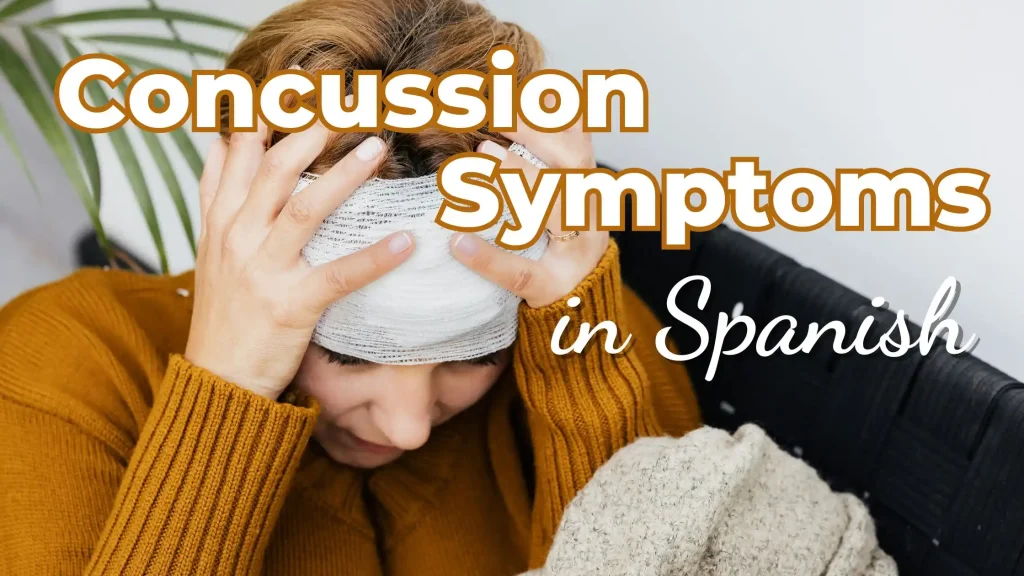This medical Spanish lesson focuses on talking about the 10 common Medical Spanish mistakes. They are mistakes that many people make, but you can avoid just by thinking about them a little bit.
Here is the 10 Common Medical Spanish Mistakes lesson I taught to the Facebook group:
1. Most common medical Spanish mistakes are regarding the use of “Muy vs Mucho”
Common Errors: “Estoy mucho triste”, and “tengo muy dolor”
Solution: Avoid this common medical Spanish mistake by recognizing quantitative vs qualitative.
Muy: muy is qualitative and means “Very” in English. It is used with adjectives and adverbs, so it doesn’t have masculine or feminine form, nor does it have singular or plural form. You use “muy” with adjectives that you can’t quantify such as: fast, big, well, ill, sick, etc., therefore you won’t use it with a noun.
Examples:
- Estamos muy contentos
 . We are very happy.
. We are very happy. - Estamos muy tristes
 . We are very sad
. We are very sad - Estamos muy cansados
 . We are very tired
. We are very tired
None of the examples above are quantitative (able to be counted), rather they are all qualitative.
b. Mucho: mucho is quantitative and it means “A lot / a lot of / much / many” in English. Therefore, it is used with verbs and nouns that can be counted. It has both masculine and feminine forms and also singular and plural forms (mucho, mucha, muchos, muchas), so you need to pay attention to the noun you’re describing.
Examples:
- Tenemos mucho trabajo
 . We have a lot of work.
. We have a lot of work. - Tenemos mucho dolor
 . We have a lot of pain.
. We have a lot of pain. - Tenemos mucho dinero
 . We have a lot of money.
. We have a lot of money.
2. Second most common medical Spanish mistakes involve: Bien & Bueno
Common Errors: “El restaurante es bien“, “En la noche duermo bueno“.
Solution: Recognize that “bien” is an adverb, so it describes a verb. Conversely, “bueno” is an adjective, therefore it will describe a noun (thing).
a. Bien: bien is an adverb and means “well” in English. Adverbs modify verbs, adjectives, other adverbs or phrases (not nouns).
Examples:
- La bebé come bien pero no duerme bien
 The baby eats well but doesn’t sleep well.
The baby eats well but doesn’t sleep well. - Revisé al paciente y estaba bien
 . I examined (checked) the baby and he was well.
. I examined (checked) the baby and he was well. - Desde que hace ejercicio se siente muy bien
 . Since doing exercises, s/he feels well.
. Since doing exercises, s/he feels well.
b. Bueno: bueno is an adjective and means “good” in English. Since it describes things, it has both femenine and masculine form and also singular and plural form (bueno, buena, buenos, buenas). Remember: Adjectives describe objects (nouns).
Examples:
- La leche materna es buena comida para bebés
 Breastmilk is good food for babies.
Breastmilk is good food for babies. - Estas medicinas son muy buenas para tratar alergias
 These medicines are great for treating allergies.
These medicines are great for treating allergies. - El ejercicio es bueno para fortalecer los músculos
 Exercise is great for strengthening muscles.
Exercise is great for strengthening muscles.
3. Third most common medical Spanish mistakes are with: Poco & Pequeño
Common Errors: “La casa era muy poca”, and “tengo muy pequeño dinero”
Solution: Poco and Pequeño are just like mucho vs muy, in fact their difference is exactly the same.
a. Poco: poco is quantitative and means “a little / not much” in English. It’s the opposite of mucho and it has both feminine and masculine forms and also singular and plural forms (poco, poca, pocos, pocas).
Examples:
- Al principio va a tener poca leche, pero está bien, no se preocupe

- A esta hora hay pocas personas en el hospital

- Hoy comí poco

b. Pequeño: pequeño is qualitative and means “small / not large”. It’s the opposite of grande and it has both femenine and masculine form and also singular and plural form (pequeño, pequeña, pequeños, pequeñas).
Examples:
- El estómago de su bebé es muy pequeño, no necesita mucho

- Me gusta mi nueva casa, aunque es pequeña

- Puede comer pero en raciones pequeñas

4. Tomar & Tocar are also common medical Spanish mistakes
Common Errors: “Tocar medicina”, “Tomar piano”
Solution:
a. Tomar: it means to take in English. Depending on the context, this verb could also mean to choose / to eat or drink / to use a form of transportation.
Examples:
- Usted necesita tomar un antibiótico
 (to take)
(to take) - Me gusta tomar café luego de comer
 (to drink)
(to drink) - ¿Tomamos un taxi?
 (to take a taxi)
(to take a taxi)
b. Tocar: it means to touch in English but, again, depending on the context, it could have other meanings such as to play an instrument / to knock / to have to do something / something is assigned to the subject
Examples:
- Es mejor no tocar la infección en el ojo
 (to touch)
(to touch) - Quiero aprender a tocar piano
 (to play an instrument)
(to play an instrument) - Alguien está tocando la puerta
 (to knock)
(to knock) - Me toca trabajar mañana
 (To have to do something)
(To have to do something) - Le tocó de cuarta en la fila
 (something was assigned to him/her)
(something was assigned to him/her)
5. Sangría & Sangre
Common Errors: “Tenemos que tomarle una muestra de sangría“, “Ha perdido mucha sangría“
Solution:
a. Sangría: the word sangría has two main meanings in Spanish:
- A popular alcoholic drink from Spain.
- An indent.
Examples:
b. Sangre: The word sangre primarily means blood. The another meaning is “race, family or social status to which a person belongs by birth”.
Examples:
- Vamos a hacerle un análisis de sangre hoy
 (blood)
(blood) - No se olvide de su sangre
 (race, family or heritage)
(race, family or heritage)
6. The word “Care” and its meanings in Spanish
a. First meaning: The first meaning of care is Cuidado but that means “careful”.
Example:
b. Second meaning: The second meaning of the word care in Spanish is Atención.
Examples:
7. Asistir & Atender
a. Asistir: the phrase asistir a could mean to help a person or to attend a meeting (to be present somewhere). Thinking about the first meaning (to help someone), it is a little old school and it’s not too commonly used nowadays.
Examples:
- Yo asisto a las reuniones semanales
 (to attend a meeting)
(to attend a meeting) - Déjeme saber si necesita que la asista con algo
 (to help someone with something).
(to help someone with something).
b. Atender: the verb atender means to assist a person. This is where the word Atención comes from.
Example:
8. The word “Discuss” and its meanings in Spanish
a. First meaning: When you look up “Discuss” in a dictionary you see “discutir” but tenga cuidado because discutir in this context means “argue” so this is like to discuss something with emotion and it’s not what you want to say to your patients.
Example:
b. Second meaning: in most cases what you want to say is essentially “to collaborate” or “to have a conversation”, so the best words for saying it is hablar or conversar.
9. The word “Last” and its meanings in Spanish
a. First meaning: the first meaning of “Last” in Spanish is Pasado (previous, not past).
Examples:
b. Second meaning: the second meaning of the word “Last” is Último (the ultimate one, the final).
Example:
10. Free and its meanings in Spanish
a. First meaning: the first meaning of “Free” in Spanish is Libre (as in not obligated, freedom).
Example:
b. Second meaning: the second meaning of the word “Free” in Spanish is Gratis (as in no cost).
Example:
Karen’s Perspective
Quiero compartir algunos conceptos extra que les serán muy útiles cuando hablen con sus pacientes latinos:
Mucho lo:
En algunas regiones de Latinoamérica, las personas utilizan la expresión “mucho lo” con el significado de “muy”. Ejemplo: Esta comida está mucho lo buena ![]()
Bien como sinónimo de muy:
También es común el uso de la palabra “bien” con el significado de “muy”. Ejemplo: me comí una hamburguesa bien grande ayer ![]() (Nota: No sé por qué lo hacemos, lo siento 😛 )
(Nota: No sé por qué lo hacemos, lo siento 😛 )
Un poco de como sinónimo de mucho:
En algunas regiones, sobre todo en Sudamérica, es muy común escuchar el uso de la frase “un poco de” como sinónimo de mucho(a), aunque se suele usar para referirse a personas o animales. Ejemplo: había un poco de gente en el hospital ![]() (Nota: es una construcción muy coloquial y no recomiendo usarla).
(Nota: es una construcción muy coloquial y no recomiendo usarla).
Otros significados de tomar:
Tomar también puede significar:
- Contratar. Ejemplo: están tomando empleados en la fábrica

- Alquilar. Ejemplo: necesitamos tomar una casa para pasar Semana Santa

- Entender o juzgar. Ejemplo: No me toman en serio

- Creer que alguien es algo que no es. Ejemplo: Lo tomaron POR ladrón

- Comprar. Ejemplo: tomaré el auto si me da un mejor precio

- Seguir una dirección. Ejemplo: en la esquina, tome a la derecha

Sangría:
No es tan común, pero también se le llama sangría a la fosa del codo.
Pasado:
Cuando algo está pasado, significa que está dañado o vencido (sobre todo comidas y bebidas). Ejemplo: iba a comer carne pero estaba pasada ![]()
Último y ultimo:
Dependiendo de si tiene acento o no, esta palabra significa:
- Último:
- Ultimo: del verbo ultimar que puede significar:
Aunque no es necesario que aprendan estos significados, es bueno que los conozcan porque suelen ser empleados en el español coloquial de diversas regiones de Hispanoamérica.
Now it’s your turn! I packaged all of this vocabulary in Spanish into some flashcards for you to study.
I put together some practice activities based on this information in an easily downloadable .pdf – Get your copy for free today!
Keep up the good work speaking responsible Spanish to your patients! Check out our other books, classes & products to help you !
*If the link isn’t working for you, you may need to unblock pop-ups in your browser settings.






Pingback: Vídeo Viernes: How to Measure Blood Sugar Level in Spanish | Common Ground International Language Services
Pingback: How to Talk About Pain in Spanish: Dolor, Duele, Adolorido | Common Ground International Language Services
Pingback: 20 Medical Spanish Word Associations | Common Ground International Language Services